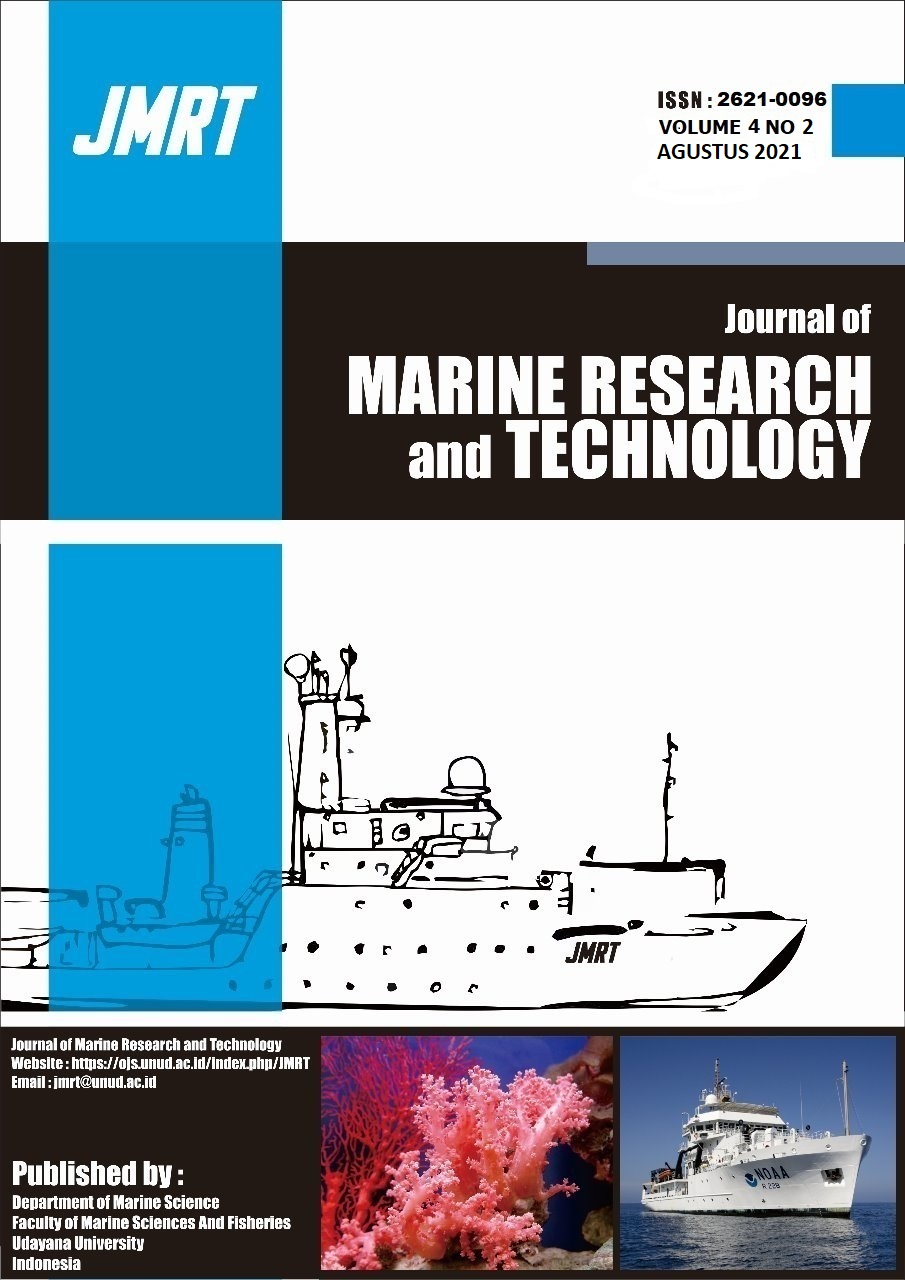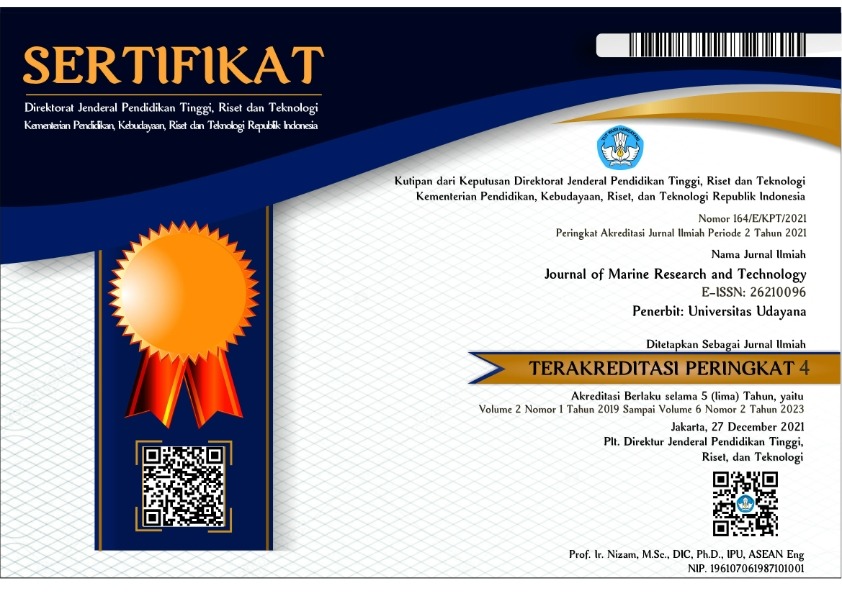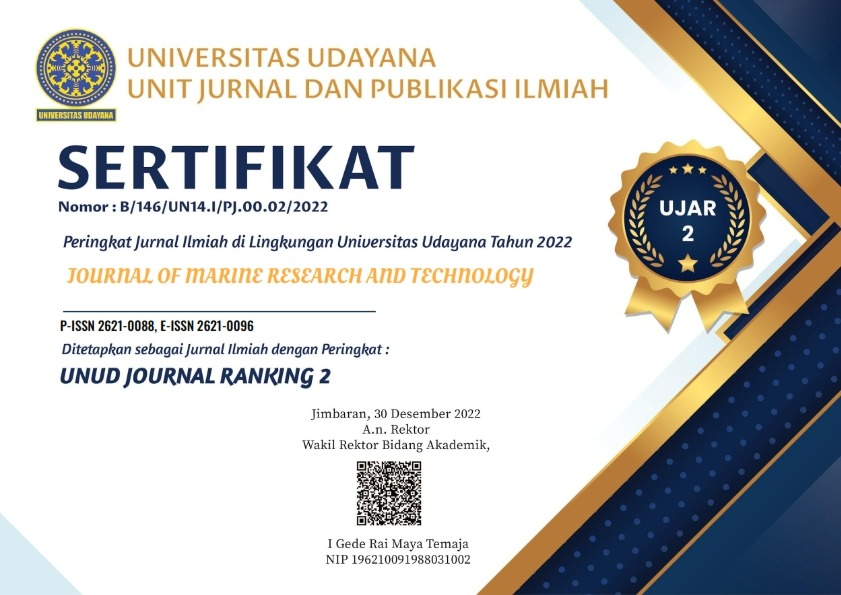Rasio Jumlah Mikroplastik dan Plankton di Kawasan Perairan Teluk Benoa, Bali
Microplastics; Plankton; Benoa Bay
Abstract
Plastic waste will degrade in the water and will break down into small particles called microplastics. Microplastics have a shape similar to food sources for marine organisms such as plankton, where if these microplastics are accidentally ingested by marine organisms it will enter the food chain and end up in humans through bioaccumulation and biomagnification. Plankton are divided into two types, namely phytoplankton as the main water producer and zooplankton as the second energy level that connects major producers with consumers at a higher level of food. This research was conducted to determine the type and ratio of the amount of microplastic and plankton as a source of food for marine organisms. This research was conducted in the waters of Benoa Bay, which is a semi-closed water area and has a variety of activities and there are also two large rivers that can contribute to pollution waste in the waters of Benoa Bay, this can lead to competition between the amount of plastic and plankton as the main producer in food chain. This research was conducted from February to July 2020 and sample analysis was carried out at the Marine Science Laboratory, Faculty of Marine and Fisheries Sciences, Udayana University. Sampling is done by pulling the trawl horizontally with a distance of 500 meters and a constant boat speed of 5 km/hour. The composition of the types of microplastics found were film, fragment, foam and fiber. The highest composition of phytoplankton comes from the Bacillariophyceae class, while the highest composition of zooplankton comes from the Malacostraca class. The average total abundance of microplastics is 1.69 particles/m3, while the average total abundance of plankton is 2851 Ind/m3 and a ratio of 1:1687. This result shows that until now the abundance of plankton is still much greater than the abundance of microplastics in the waters. However, considering the high amount of plastic use from household and tourism activities, it can also increase the inclusion of plastic waste that will enter the ocean.
Downloads
Copyright Notice
The copyright to this article is transferred to Journal of Marine Research and Technology (JMRT). The copyright transfer covers the exclusive right and license to reproduce, publish, distribute and archive the article in all forms and media of expression now known or developed in the future, including reprints, translations, photographic reproductions, microform, electronic form (offline, online) or any other reproductions of similar nature.






